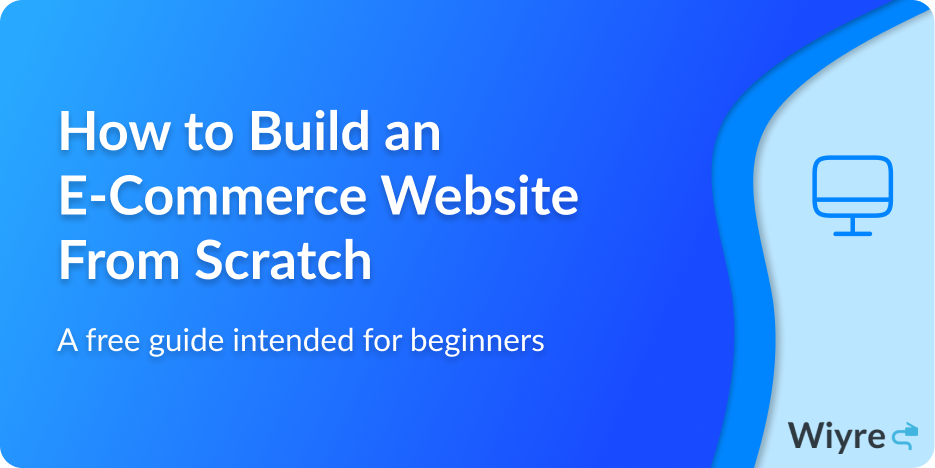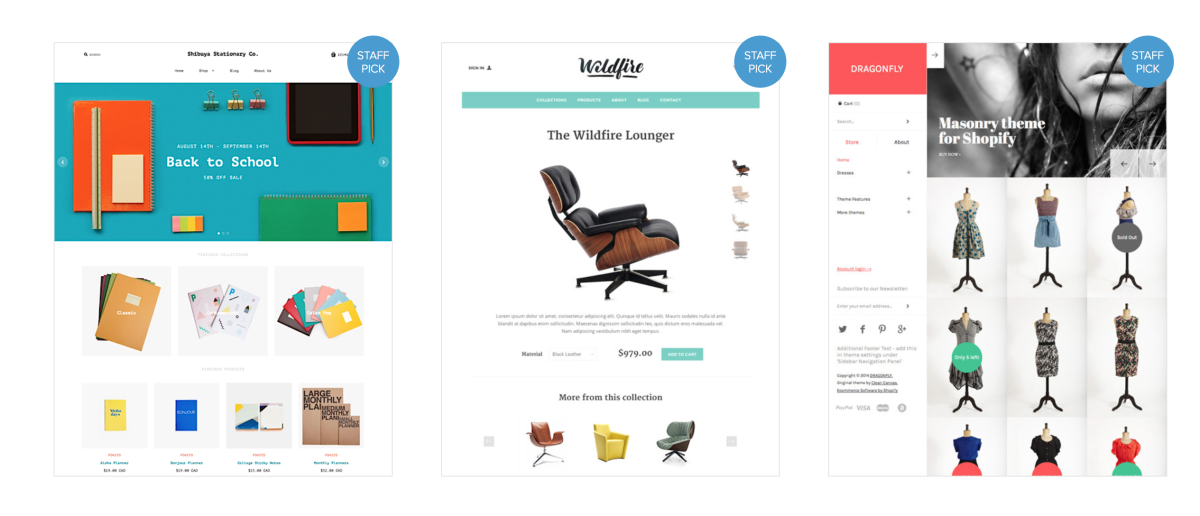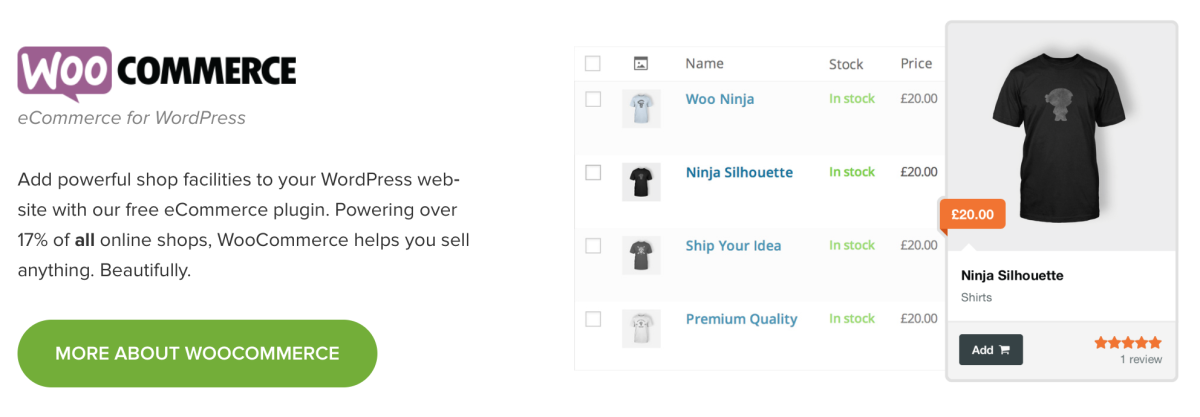Whether you’re an established business or just starting out, it is completely worth your time and money to invest in building an e-commerce website so you have a online presence to service potential customers. In this guide, we’ll walk through the various requirements and tools needed to build an e-commerce website from scratch.
I can’t express how knowing how to create a e-commerce website has helped me in my personal business endeavors. Building a e-commerce website makes it easy for customers to buy products and obtain information about my brand and company right from their smartphone or computer.
Do I need to hire an expert to build an online store?
Building, designing, managing, and collecting payments from customers can be done easily and straightforward, given the right tools I am about to show you. You DO NOT need to know a single thing about CSS/HTML/PHP or any other programming language. If you can read and write in your native language, you can make a website. How do I know this? Because when I made my first e-commerce website, I didn’t know a single thing about website design, web hosting, or all the other issues business owners run into when trying to sell products online. This guide will show you it all, from start to finish. It’s up to you to follow along and make your e-commerce dreams a reality.
So let’s get started, shall we?
What do I need for an E-Commerce website?
To create an e-commerce website, you will need the following:
- A method to collect payment from customers, such as a bank account, a PayPal account, or Google Wallet.
- A domain name (Where customers will go access your store)
- A website host (Although some platforms will provide this for you by default.)
- Lastly, you will need an e-commerce website platform (more on this later)
Step 1: Choosing the Right Domain Name
In order to setup an e-commerce website, you will need a website domain name. The domain name is what your customers will type into Google in order to find your products online. The domain name for this website is “www.wiyre.com” – your website domain name can be whatever you want, as long as it’s available and not already taken by another business. It’s extremely important when you’re choosing your domain name to use a “.com” domain name extension. You could use a domain name like “.biz”, or “.net”, but it’s simply not a good idea. If you want to hear the in-depth explanation of why this is, I summed it up quite nicely in this blog post.

Step 2: Selecting a Hosting Provider
In addition to a domain name, you also need a hosting provider. The hosting provider makes it possible for visitors to access your website. Sending data back and forth from a website is done every time a customer visits your site – you need a hosting provider in order to make your website “live”, so to speak. Before you go and buy a hosting service, first check to see if your e-commerce platform provides you with hosting (Shopify hosts your store on your behalf, meaning that you don’t need to pay for additional hosting if you choose Shopify).
So with the array of hosting providers out there, which one is best? In my personal opinion, I use DigitalOcean for my web hosting needs. The reason is because not only do they make my website very fast, but they also are incredibly reasonable with pricing ($6/mo – and you are not stuck paying for hosting for a year, you can cancel at anytime). I could go on and on as to why DigitalOcean is the best hosting provider out there, but the bottom line is this:
- DigitalOcean has excellent documentation, you can get started just by creating a droplet and following the steps one by one. If you get stuck, you can visit the DigitalOcean community to ask a question
- Host multiple websites on a single host. I have multiple websites that are hosted in a single droplet, saving money.
- Scalability on demand. Need to increase your storage? DigitalOcean allows you to do so with a single click.
- 1-click installs for WordPress, E-Commerce, and other CMS platforms
I swear by DigitalOcean because they have provided me with everything I need and more. If you’ve made up your mind and decided to use DigitalOcean as your hosting provider, you can click here to setup an account and get started. If you want some details on purchasing the DigitalOcean hosting plan, or are not sure how to setup a website on DigitalOcean, read this guide: How To Setup A WordPress Instance On DigitalOcean (Step by Step Guide)
Step 3: Choosing an E-Commerce Platform
There’s a ton of E-Commerce platforms out there. I’ve the cut the list down to two, Shopify and WooCommerce. Below, I am going to talk about each one, the pro’s and con’s, and which one I recommend depending on your business needs. There are other E-Commerce platforms out there like Magento and Volusion, but I don’t recommend them because of the learning curve, and they are usually geared towards huge companies that need to worry about multiple servers and processing millions of orders.
1: Shopify
Shopify is my first e-commerce platform recommendation. I use it personally to sell products online. The great thing about Shopify is that they give you a free 14-day trial to test out everything, so if you totally hate it (I doubt you will, but you never know) by the end of the 14 days, just cancel and forget about it. There are over 80 different ways to accept payments, so you can integrate PayPal, Stripe, Google Payments, and even Shopify’s own payment processor. Pricing starts at $29/month, with a 2% commission on all sales. There are other payment levels available depending on your needs.
The other cool thing is that setting up your store is -so easy- to do, there is a full themes page which showcases both free and paid themes. Most of the themes can be custom designed inside of the settings page to change the color, layout, and other details incredibly easily.
Shopify also has a great collection of plugins. You will use plugins to help sell content and a perform a slew of different tasks. (Example: A coupon plugin, which shows coupons next to products you want to sell quickly). There is a plugin for nearly everything, from shipping products to communicating to customers, to keeping stock of inventory. Installing a plugin is easy, there is a custom plugin section in your Shopify admin section that makes it easy to control the settings of each one. Shopify has the advantage of being incredibly easy to get to know. The learning curve is very low, and if you do run into trouble, there is free customer service available 24/7. Not many E-commerce platforms offer this. One downside is that customizing anything beyond what the theme allows you customize (like inserting custom icons or text in certain places that your theme doesn’t support) requires you to dive into some code.
Decided to go with Shopify but not sure where to start? Take a look at this guide: Setup a Shopify Store in 30 Minutes or Less
2: WooCommerce
WooCommerce is a alternative and a very popular E-Commerce platform that runs alongside WordPress. If you want to learn how to setup a WordPress website, you can read my guide on that here: So, you want to make a website. The advantage of using WooCommerce is that you can customize almost everything about your store. With that said, there is a bit of a learning curve to get used to WooCommerce and WordPress as a whole. If you have no prior experience with WordPress, it might be worth it to watch an introductory guide on YouTube or read a how-to for the basics.
What Shopify doesn’t have, WooCommerce probably has, that’s because it has a plugin list that can be combined with WordPress (we’re talking over 100,000 plugins, literally a plugin for almost everything). You can choose a custom WooCommerce theme, or stick with a theme from WordPress. There are both free and paid options available, with WooCommerce-specific themes usually costing a bit more than the standard WordPress theme. If you’re looking to go this route and need some advice on WordPress themes, this guide will teach you everything you need to know about choosing a good theme.
WooCommerce is a solid, albeit initially confusing e-commerce platform to sell products online. They do not take a commission off of your sales (although you can bet PayPal, Stripe, and the other payment plugins will!). There is no telephone, chat, or email support for WooCommerce (although you could try and post your question in the WooCommerce Forums to see if someone more knowledgeable could lend you a hand). If you get stuck, you’ll stay stuck until you work around the issue or get someone to help you out.
So you now know the options you have when it comes to e-commerce. If this helped you at all, I’d really appreciate it if you shared this article with someone who could also benefit too!




WordPress is the easiest way if you want to build it yourself, cementing every brick. else shopify is best if you want most of the things automating. I personally prefer WordPress as I have independence to add any functionality I want via plugins.
I was already considering using woocommerce, and your article has cemented my decision. thanks a lot.